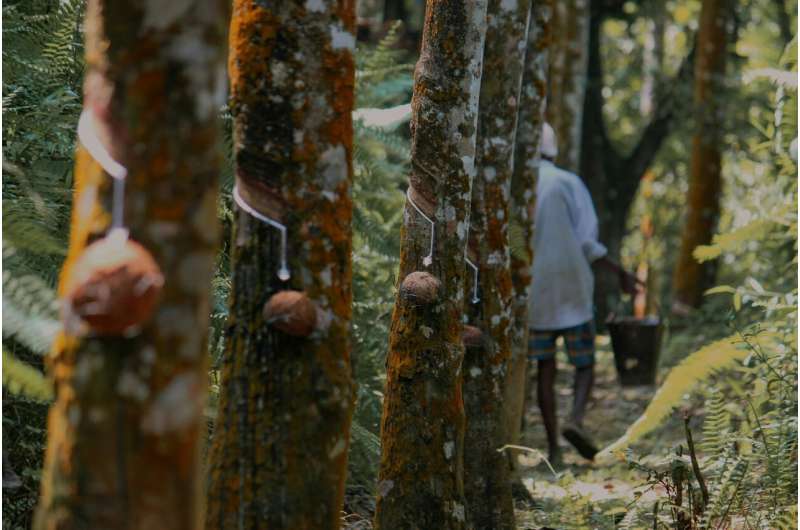This article has been reviewed according to Science X's editorial process and policies. Editors have highlighted the following attributes while ensuring the content's credibility:
fact-checked
trusted source
proofread
How global factors influence Thailand's rubber market

A study published in the International Journal of Economics and Business Research has looked at the various factors affecting fluctuations in the price of natural rubber in Thailand, the world's largest producer of the product. The study considers both domestic and external influences on rubber prices, showing just how the Thai market is affected by global changes and trends.
Part Sungkaew of King Mongkut's University of Technology North Bangkok, in Thailand, points out that exports are critical to the Thai rubber industry. Just 18% of production is used domestically. Even then, domestic use is largely accounted for by foreign companies operating within Thailand.
In other words, external factors such as exchange rates, export volumes, and oil prices all play part in determining the price. Moreover, despite Thailand being the leading producer, Sungkaew found that the market favors foreign buyers.
An important factor that affects price is the volume of natural rubber stock within Thailand and abroad. This factor makes the Thai industry vulnerable to global market dynamics, with price changes in other major producing countries such as Malaysia and Indonesia affecting prices in Thailand. In addition, the rise of China as a major consumer further complicates the changing market, suggesting a shift in the balance of power in the global natural rubber market.
Rubber farm cooperatives have offered some relief through cost-saving measures and efficiency drives. However, the impact of these is very subtle. The actions of the rubber farmers themselves has a very small role to play in the global natural rubber market.
There have also been government interventions aimed at trying to prevent falling prices, driven by changing stocks and demand. But, the study found that the predominance of large buyers persists. The Thai government is under pressure to create policies to support value-added rubber products and the domestic industries in an attempt to mitigate against price fluctuations and stabilize the market.
More information: Part Sungkaew, Factors affecting natural rubber prices in Thailand, International Journal of Economics and Business Research (2024). DOI: 10.1504/IJEBR.2024.138077
Provided by Inderscience





















